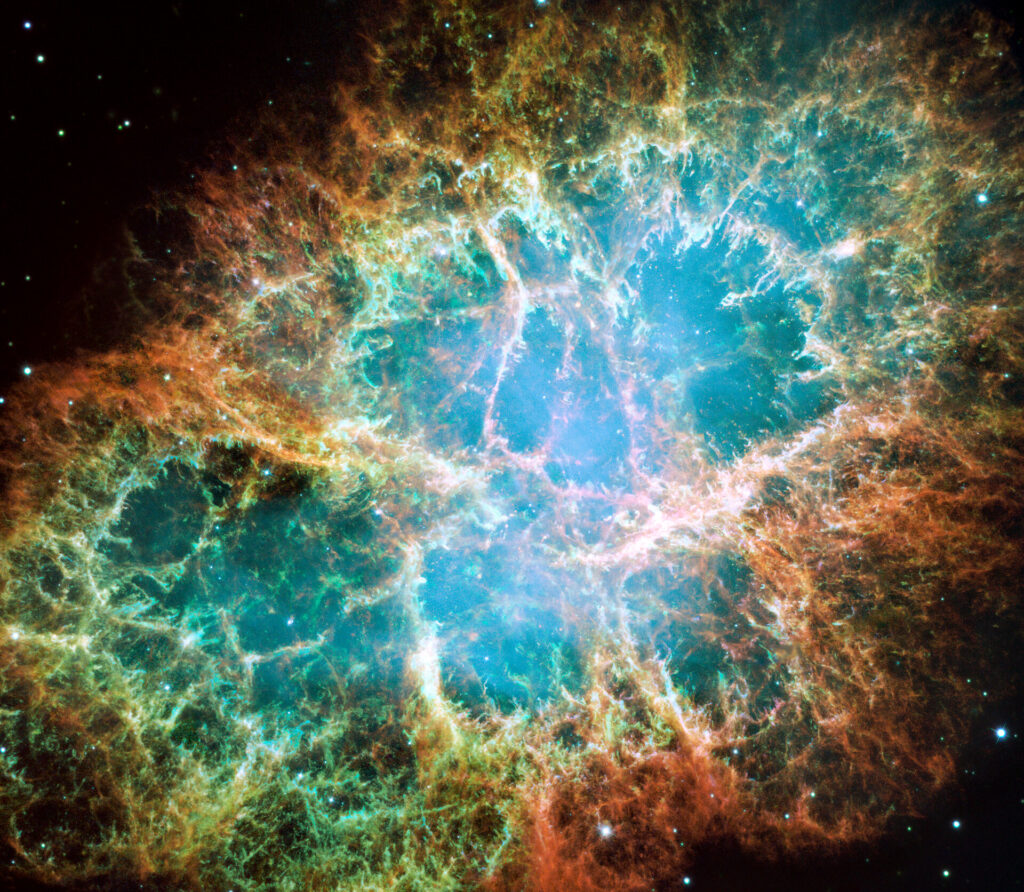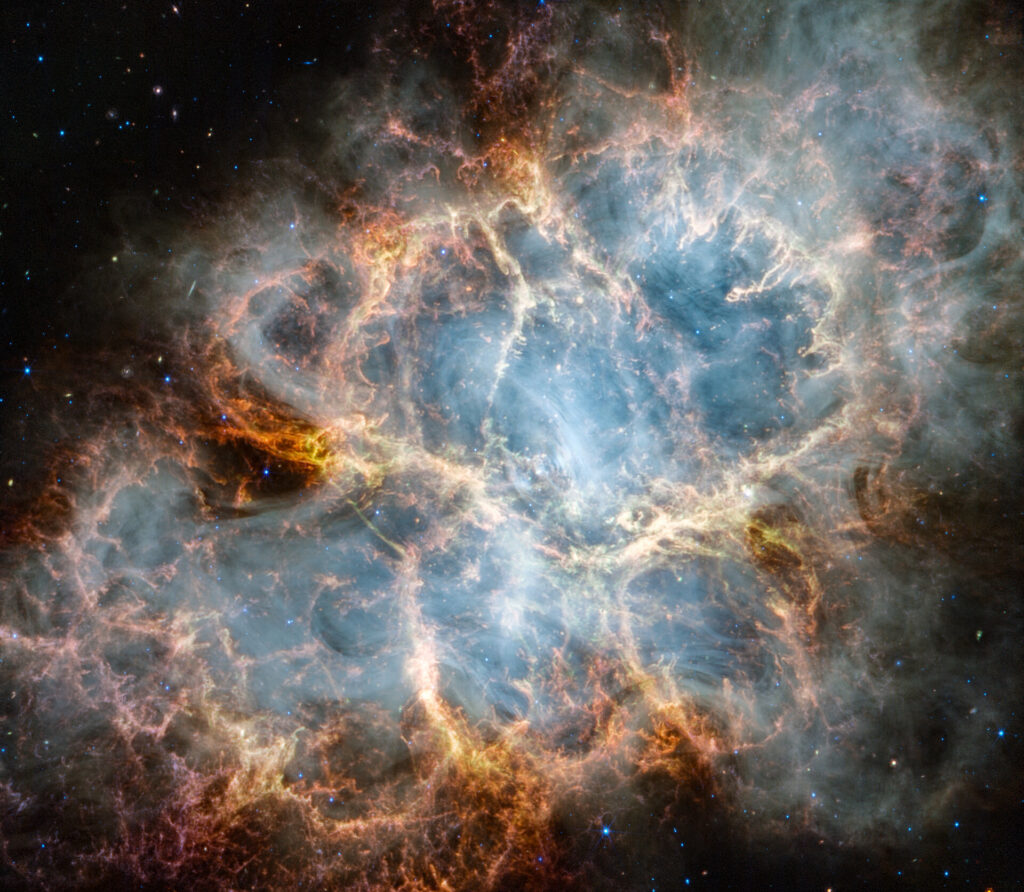Astronomers working with the James Webb Space Telescope (JWST) published images of the famous Crab Nebula. They provide an opportunity to shed light on its structure and origin.
History of the formation of the Crab Nebula
On July 4, 1054, Chinese astronomers noticed a new star against the background of the dawn. Soon it became so bright that for 23 days it could be seen in the daytime sky. It had been observed in the night sky for two years.

Seven centuries later, astronomer John Bevis discovered a nebula in the constellation Taurus. It has several official designations, but it is best known as the Crab Nebula. In 1921, astronomer Carl Lampland, looking through old images of the nebula, realized that it was expanding. Soon scientists could establish its nature. It turned out that this was the remnant of a supernova observed in the earth’s sky in 1054.
In 1967, astrophysicist Franco Pacini predicted that, as a result of a supernova flare, a rapidly rotating neutron star with a powerful magnetic field would form. A few months later, his claim was proved: a pulsar rotating at a speed of 30 revolutions per second was discovered in the center of the Crab Nebula. Thanks to this, it took on an important place in the history of astronomy and became the object of regular observations.
Crab Nebula through the eyes of JWST
The Crab Nebula has been photographed repeatedly by space telescopes, including Hubble. JWST was also added to this list. It photographed the nebula using the Near-Infrared Camera (NIRCam) and the Mid-Infrared Instrument (MIRI).

At first glance, the image obtained by JWST resembles Hubble telescope images. It shows a clear, cage-like structure of fluffy red-orange gas filaments and dust nodes surrounding the central area.
However, some aspects of the internal structure of the Crab Nebula become more noticeable precisely in the infrared range. In particular, you can pay attention to the translucent milk material in its inner areas. This substance emits synchrotron radiation, which is especially clearly visible in the infrared range. It is generated by particles accelerated to extremely high speeds by the powerful magnetic fields of the pulsar.
To find the pulsar heart of the Crab Nebula, it is necessary to trace the branches that follow the circular ripples in the center. Then thin white ribbons pass from the core. They are closely grouped with each other, determining the structure of the pulsar’s magnetic fields.
At centre left and right, the white material curves sharply inward from the edges of the filamentous dust cage and heads towards the location of the neutron star, as if squeezing the “waist” of the nebula. Such a sharp narrowing, also caused by magnetic fields, leads to the fact that some areas of the supernova shell, especially on the left, do not emit synchrotron radiation.
Inside the nebula, yellow-white mottled filaments form loop-like structures that represent areas of dust particle formation. If earlier astronomers knew about the presence of dust in the Crab Nebula, then, thanks to the unsurpassed infrared sensitivity of JWST, they could reveal its full spatial distribution for the first time.
According to https://www.esa.int
Follow us on Twitter to get the most interesting space news in time
https://twitter.com/ust_magazine
